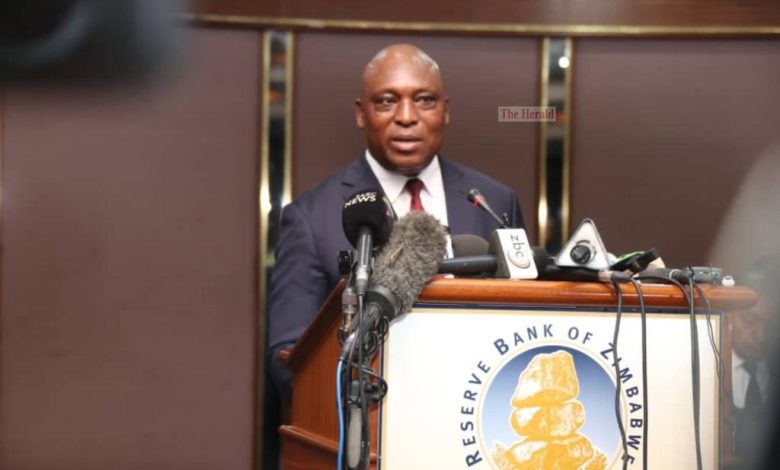Firms call for supportive framework to ensure new currency’s success
Some companies say the success of recent monetary measures by the Central Bank will be dependent on supportive frameworks put in place by the fiscal authorities.
The Reserve Bank of Zimbabwe (RBZ) governor, Dr John Mushayavanhu, presented the Monetary Policy Statement (MPS) on April 5, 2024, meant to address the issue of currency volatility and exchange rate instability, which have been the primary drivers of inflation in the economy.
In addition, the MPS introduced the Zimbabwe Gold (ZiG) structured currency to replace the Zimbabwe Dollar at a specified conversion rate determined by the Central Bank.
“However, the success of these measures will be dependent on supportive frameworks to be put in place by the fiscal authorities,” Masimba Holdings said in its recent financials.
The RBZ, as part of the reforms, also abandoned the foreign currency auction system and adopted the willing buyer, willing seller method.
The International Monetary Fund (IMF) has often urged Zimbabwe to fully liberalise the foreign exchange market to allow the rate to be determined by market forces, indicating that the credibility and effectiveness of Zimbabwe’s currency reforms will depend on the “swift resolve” to liberalise the foreign exchange market.
According to Old Mutual Securities, the effectiveness of a vibrant interbank foreign currency market and the sustainability of the new ZiG currency, will be largely determined by the ability of the government to cut back on its deficit-financed expenditure activities.
In its MPS policy review, the securities firm said the attempt by the RBZ should dissipate parallel market activities and move foreign currency trading into formal banking channels with a more transparent pricing mechanism.
“The effectiveness of a vibrant interbank foreign currency market and the sustainability of the new ZiG will be largely determined by the ability of the government to cut back on its deficit-financed expenditure activities.
“Our hope is that the valuable lessons learned in that period will be applied to ensuring that quasi-fiscal activities are not repeated and the ZiG will be able to hold its value,” the firm said.
It added that the second pillar to the success of this policy is ensuring that the export industries’ operating environment is conducive to competitive commercial enterprises.
However, the securities company said it believes that the MPS policy measures are a step in the right direction and that both fiscal and monetary authorities should maintain a strategy of mopping up excess ZiG liquidity and boosting the productive capacity of all export-related industries as critical priority areas.
Zimbabwe National Chamber of Commerce (ZNCC) president, Mike Kamungeremu, said apart from just defending the local currency, most government fees should be collected in the local currency.
Turnall, a tile manufacturing company said the economic situation is expected to be unstable on the back of a poor agricultural season as a result of drought and declining commodity prices on the global market.
As a result, the group is working to return to the regional export market and is making a significant investment in new equipment and plants.
Datvest said the promulgation of Statutory Instrument 218 of 2023, which extended the multicurrency regime to 2030, fostered market confidence in pursuing USD medium-term transactions and investments, albeit limited due to general macroeconomic policy instability.
“In this regard, the fund expects this to translate to increased investor confidence and improved stock market performance. The shares on the Victoria Falls Exchange are expected to preserve value for unitholders,” the Exchange Traded Fund (ETF) said in its recent financials.
Meanwhile, Zimnat Asset Management Company, in its review of the 2024 MPS, said a stable local currency is crucial for enhancing export competitiveness and rebuilding foreign currency reserves, which act as an important economic shock absorber.
“However, it appears that the introduction of ZiG was fast tracked for the following reasons and according to our analysis, the reserve base of ZiG was lower than market expectations at US$285 million, or approximately 12 percent of the money supply,” reads the review report.
Zimnat also said ZiG’s foreign currency reserves only cover reserve money and not the total money supply, which could pose a challenge for full convertibility to foreign currency.
“There was a lack of sufficient awareness, education and training on the new currency for businesses and households, which could affect ZiG’s acceptability in the market.
“The conversion process may be complicated for the average person, making it difficult to understand the post-conversion values of ZWL balances in ZiG,” the asset management firm said.
It also highlighted that there are also uncertainties regarding the conversion of ZWL loans and fixed income investments that were contracted at higher interest rates due to hyperinflation, given the prescribed lower bank policy rate.
According to MPS, RBZ’s reserve asset holdings backing the Zig currency comprise US$100 million in cash and 2,522 kg of gold worth US$185 million to back the entire local currency component of reserve money.-ebusinessweekly










